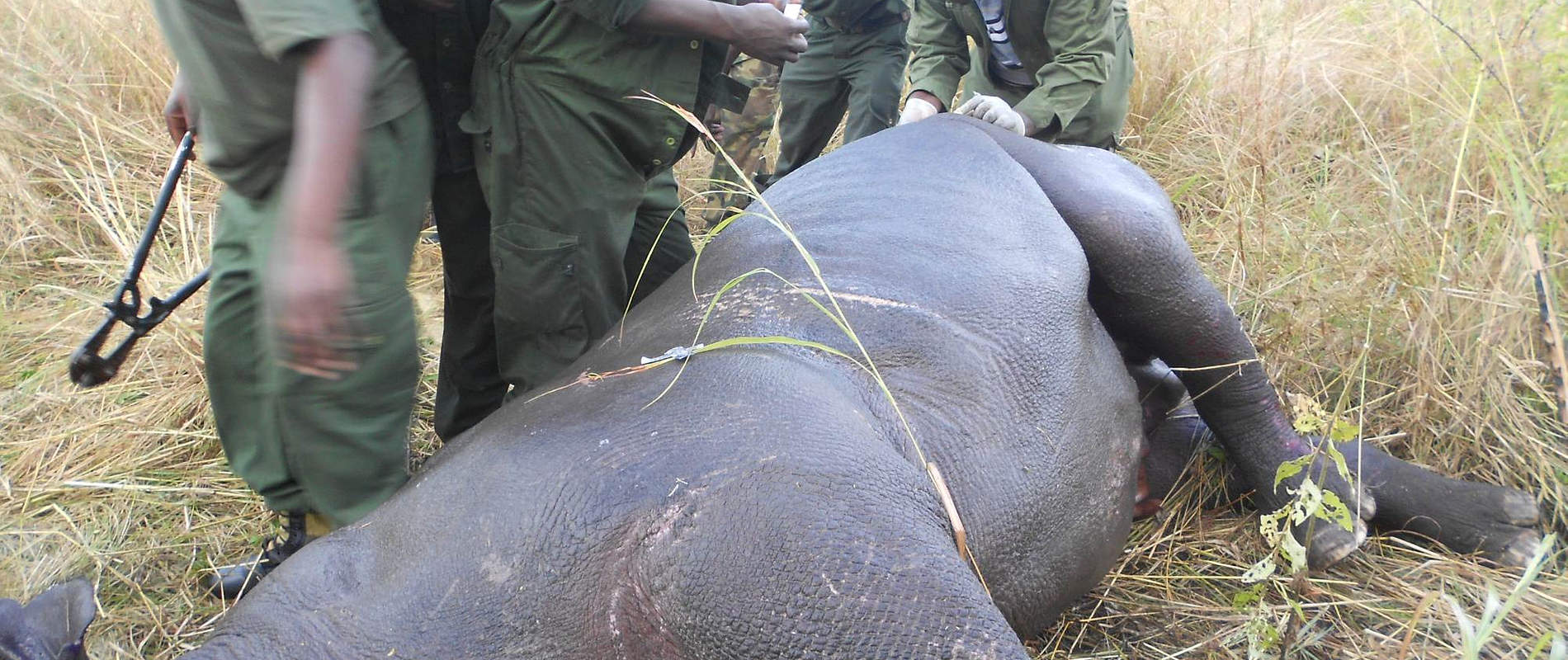There was prompt response to a case brought to the attention of The Kenya Wildlife Service and DSWT on the 10th of October
There was prompt response to a case brought to the attention of The Kenya Wildlife Service and DSWT on the 10th of October. A rhino was reported dragging a log attached to a taught cable snare around its neck. The Kenya Wildlife Service arranged for an aircraft to be dispatched immediately to fly KWS veterinary Officer Fred Oliang’a from Nairobi (SKY VET) and KWS Veterinary Officer Dr. Limo, who is seconded to the Trust funded Mara Mobile Veterinary unit, was collected from the Masai Mara on route to help with the operation.
The Rhino was called Baraka, a well-known bull rhino with quite a history. He was born in 1976 and translocated to the then newly formed Mugie Rhino Sanctuary from Nakuru National Park in 2005. He remained on Mugie for a number of years, however when Mugie was hard hit with rhino poaching incidents in 2011 the Kenya Wildlife Service made the decision to remove the remaining rhinos and translocate them to where they felt they would be safer. Baraka was taken to Ruma National Park where he remains today.



Once the team reached Ruma they were directed to where the injured rhino was last sighted. Chemical immobilization was done on foot since the thick vegetation cover inhibited the use of a vehicle. Once he was successfully darted he ran off quite a distance before collapsing, but with aerial support provided the veterinary team were guided to where he had fallen. Stabilization of respiration was achieved when 5mg Butorphanol tartrate was injected through the auricular vein.
The braided winch snare strangling the animal caused a relatively fresh wound around the neck region. Throughout the operation Baraka was sopped with plenty of water to help regulate his body temperature and his respiratory rate and depth was monitored throughout the treatment. The wire was quickly cut off using a wire cutter and the inflicted wound cleaned and treated. Once the revival drug was administered he was back up to his feet, no doubt feeling untold relief now that he was free of the crude snare that could so easily have cost him his life.



With the demand for exotic curatives, and aphrodisiacs driving the price of rhino horn higher than gold, today rhino horn is fetching as much as US$ 60,000 a pound. 95 percent of the world’s rhinos have been lost in the last four decades, with the worst hit populations in Southern Africa. Thankfully due to the stringent measures taken Kenya has done well to protect their remaining population, ensuring they live in heavily patrolled rhino sanctuaries and protected areas, but as seen in Baraka’s case, the threat to them remains ever present.






